Students strike to spur adults into climate action
Kids across the globe are protesting a failure of governments to cut greenhouse-gas emissions
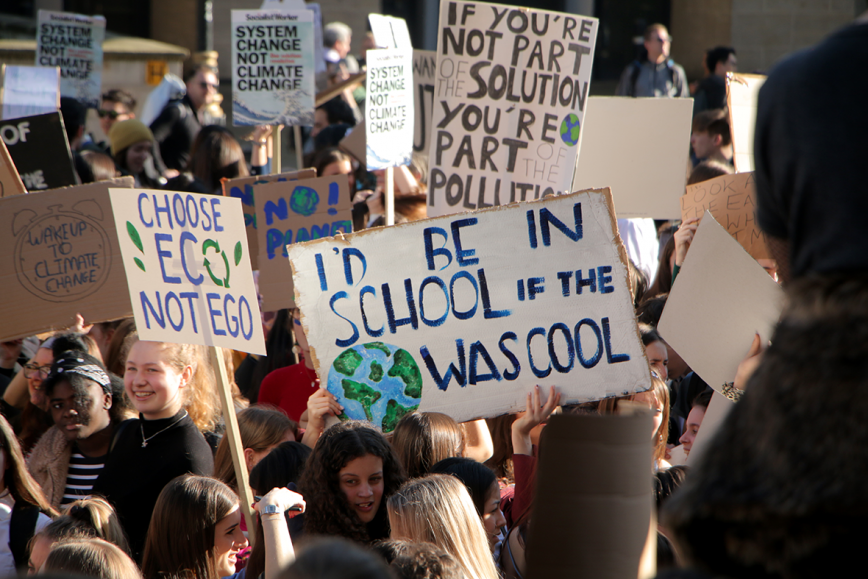
Thousands of students protested in support of climate change action in London, England, on February 15. A global strike is planned for March 15.
Socialist Appeal/Flickr (CC BY 2.0)
For the past several months, growing numbers of students around the world have been cutting class — not to play but to protest. The topic driving them is the same: Earth’s changing climate. Increasing wildfires and droughts, rising seas and more extreme weather are among the events being tied to elevated emissions of greenhouse gases, such as carbon dioxide. As students see it, governments have not done enough to cut those emissions or to plan ways to adapt to the impacts of climate change. So students have been going on strike. And on March 15, many plan to participate in a coordinated strike that will take place across the globe.
As of March 6, there were 596 planned events across 64 countries, according to a list kept by the group Fridays For Future.
Milou Albrecht, 14, of Castlemaine, Australia, is a co-leader of strikes in her country. What motivates her, she says, is worry about wildfires. When she was little, a fire quickly approached the bush country where she was playing at a friend’s house.
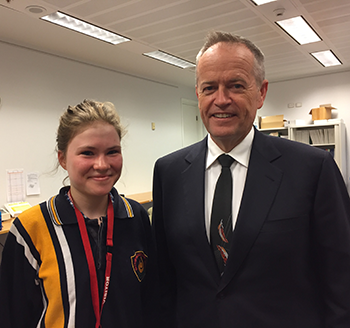
Smoke quickly filled the air, she recalls. Everyone had to evacuate. “You didn’t know what to take, so we didn’t take anything.” She remembers feeling terror while waiting in an underground bunker for the fire to pass. The scare spurred her to find out more about bushfires. To her dismay, she learned that climate change is making such wildfires more frequent in Australia and elsewhere.
Wildfires aren’t the only thing that will worsen as global temperatures rise. There are a wide range of changes that will cause — and sometimes are already causing — people and animals to suffer. Many people could even lose their homes. Some may have to move far away.
Human activities have caused a warming of 1 degree Celsius (1.8 degrees Fahrenheit) above temps typical of pre-industrial times. That’s according to the Intergovernmental Panel on Climate Change, or IPCC. Human-induced global warming already has caused multiple changes in Earth’s climate, the IPCC noted in a 2018 report. Those impacts include more heat waves, more and heavier rains or snow events and a greater risk of drought. These changes are already stressing people, animals and ecosystems across the planet.
At the current rate, the increase in average global temperatures will hit 1.5 degrees C (2.7 degrees F) sometime between 2030 and 2052, the IPCC says. Beyond that point, impacts will be even more severe.
And the longer people wait to cut back releases of greenhouse gases, the more difficult it may be. This is true for the U.S. auto and energy companies, for instance. And the longer they wait, the higher the costs for any action will be. That’s according to a 2017 study in the journal Environmental Science & Technology.
Such data, many students now argue, mean the time to act is now.
A worldwide movement
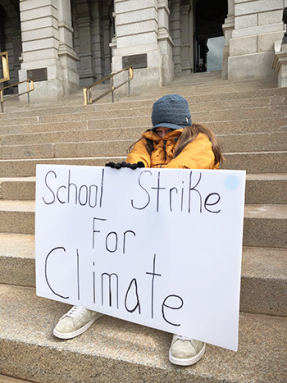
Many young protesters have drawn inspiration from Greta Thunberg. The 16-year old Swedish teen has Asperger’s syndrome. This mild form of autism can leave people uncomfortable in social situations. Yet Greta began regularly protesting outside Sweden’s Parliament last summer. She also has encouraged kids to strike in other countries. She even spoke to delegates at the 2018 United Nations Climate Change Conference (UNCCC). It was held in December in Katowice, Poland.
“You say you love your children above all else, and yet you are stealing their future in front of their very eyes,” Greta told attendees at the UNCCC. There is still time to limit the worst impacts, she noted — but only if governments act now. “Until you start focusing on what needs to be done rather than what is politically possible,” she said, “there is no hope.”
Haven Coleman, who turns 13 this month, is one of the co-leaders of the U.S. school strikes. She, too, has been inspired to act by changes she’s seen in her part of the world. “We’re affected by floods and fires, and we’ve been in a 19-year drought,” says this student in Denver, Colo. Climate change will make such events more common and worsen air pollution, especially from wildfires. Breathing dirty air already causes problems for Haven, who has asthma.
“All ages are welcome for the climate strikes,” notes Nakate Vanessa. “Not being a teen does not stop you from striking for climate,” says the 22-year old. She lives in Uganda, a nation in east-central Africa. The first two months of this year in her area have already been unusually hot and dry, she observes. So on March 15, she plans to join student protests in the capital city of Kampala. Ugandan students also will go on strike in Jinja, a town on the shore of Lake Victoria, she notes.
“Not taking climate action is like locking yourself up in a house on fire.”
— Nakate Vanessa
The impacts of Earth’s changing climate will hit developing countries, like hers, especially hard. Many people there have limited electricity, few government services and low incomes. And residents are more likely to work outside, where they’re subject to extreme heat or other problems. These people also tend to have less money to pay for steps to adapt, such as buying and running air conditioners.
“Climate denialism is like suicide,” Vanessa says of the people who argue climate change is not happening. “We cannot let ourselves perish as we look on without doing anything,” she says. “Not taking climate action is like locking yourself up in a house on fire.”
Demanding change
If adults are the ones who need to act, why are kids protesting? “It is our generation which has the highest stake in this,” explains Scarlet Possnett, 15. The Suffolk, England, teen is an organizer of YouthStrike4Climate. A big first step is for governments to recognize climate change as a crisis, she says. And many, seemingly, do not yet see the urgency, she adds.
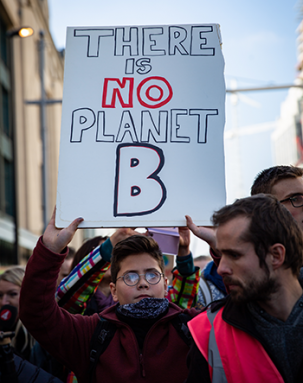
Just 100 companies across the globe are responsible for 70 percent of the greenhouse gases driving climate change, Scarlet notes. She cites figures from a 2017 report from CDP. That’s a British group that gathers data on pollution. Those big companies won’t reduce emissions on their own, the teen believes. To prompt them to act, she argues, “there needs to be a policy change.”
Policies are strategies that governments or other groups can put into action. The right policies might lower, or even eliminate, releases of greenhouse gases.
One March 2019 study finds that policies to encourage greater reliance on renewable energy helped drop greenhouse-gas emissions in 18 industrial countries. They included Sweden, the United States, the United Kingdom and Germany. Policies on energy efficiency and conservation (not wasting energy) also helped lower emissions for those and other countries, the study found.
But these cuts so far “fall a long way short” of achieving the goals of a 2015 treaty, the study points out. Known as the Paris Accord, that treaty pledged to limit global warming to 2 degrees Celsius (3.6 degrees Fahrenheit) above pre-industrial levels. Doing that will require cutting emissions a lot. How much? By roughly 25 percent over the next 10 years. Key to that will be huge moves “to phase out the use of fossil fuels,” the report says. Corinne Le Quéré in England at the University of East Anglia and her colleagues outlined what would be needed in Nature Climate Change.
Dealing with dread
Many young people can hardly remember a time when Earth’s changing climate did not threaten them, says Lilah Williamson. And going forward, “we’re not going to know a time without [its] impending doom,” says this 14-year old from Burnaby, British Columbia in Canada. The region where she lives has suffered from storms that have been dumping heavier rains than in the past. There also have been more droughts and wildfires. “I just can’t imagine what it’s going to be like in the future,” she says.
Such students can feel burdened by a type of dread, points out Susie Burke. She’s a psychologist in Australia and Milou’s mom. Imagining how climate change will affect them leaves many kids anxious. They also feel empathy for others who suffer serious impacts. Burke and her colleagues wrote about that and other psychological impacts of climate change in the May 2018 Current Psychiatry Reports.
Burke supports her daughter’s protests. School strikes are a “problem-focused” way of coping with climate’s impacts. “You try to do something about the problem that is causing you stress,” she explains. The protests can reassure children and teens that they’re not alone: “Your concerns are shared by a whole bunch of people.”
-
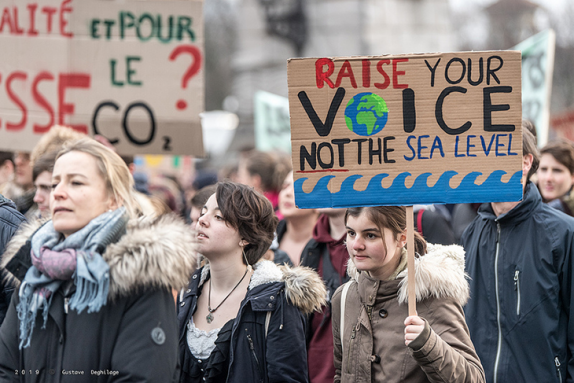
These students in Lausanne, Switzerland, are among thousands who have protested in the last few months over governments’ failure to take stronger action to deal with climate change. They marched on February 2. Gustave Deghilage/Flickr (CC BY-NC-ND 2.0 ) -
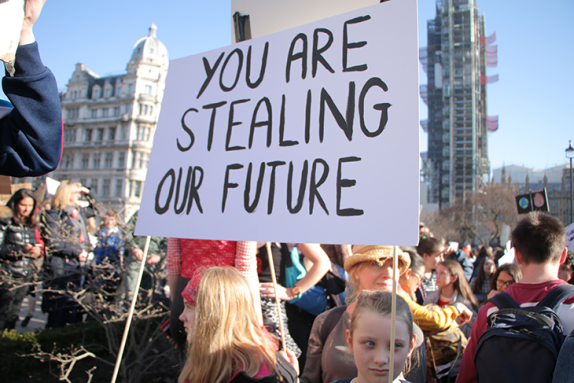
A student carries a sign at a protest on February 15 in London, England. Socialist Appeal/Flickr (CC BY 2.0) -
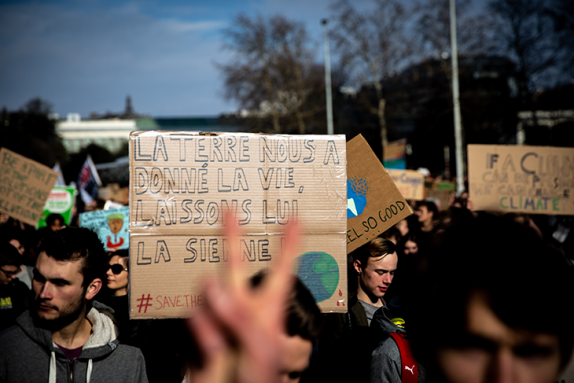
Students carried signs in English and French at a climate protest in Brussels, Belgium, on February 21. greensefa/Flickr (CC BY-NC 2.0) -
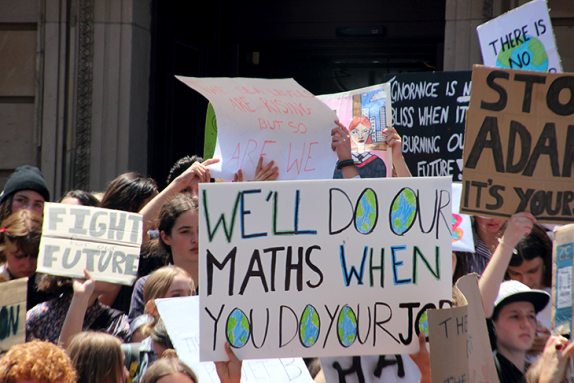
Students carried signs in English and French at a climate protest in Brussels, Belgium, on February 21. greensefa/Flickr (CC BY-NC 2.0) -
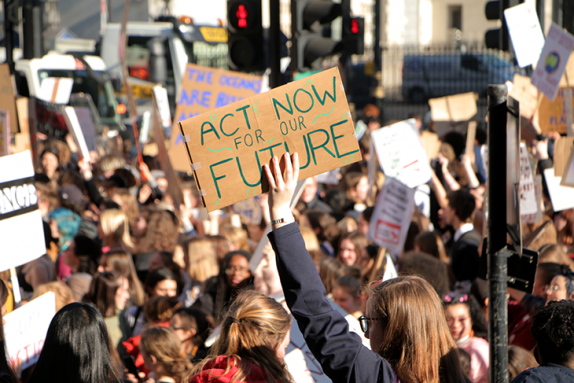
These students marched in London, England on February 15. Socialist Appeal/Flickr (CC BY 2.0) -
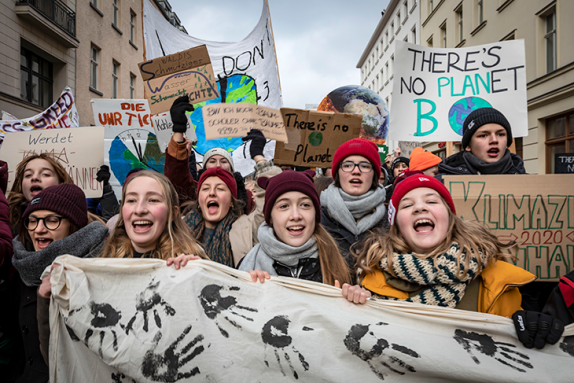
These children in Berlin, Germany marched on January 25. Jörg Farys/WWF/FridaysForFuture Deutschland/Flickr (CC BY 2.0) -
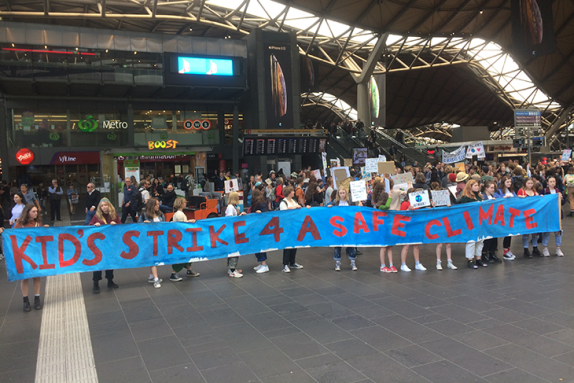
Thousands of young people in Australia will join worldwide school strikes on March 15. Many of them turned out for a massive school strike there on November 30, 2018. Susie Burke -
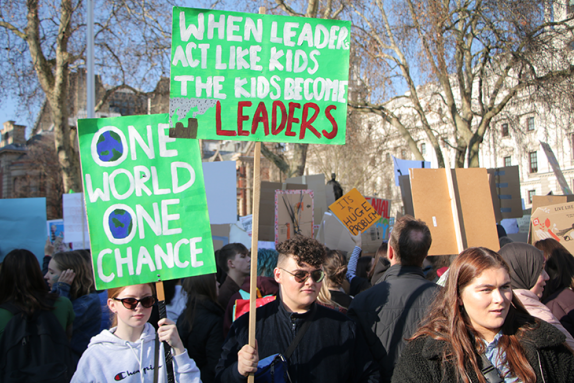
Students skipped school for a climate strike in London, England on February 15. ocialist Appeal/Flickr (CC BY 2.0)
Learning about climate change and its impacts can seem overwhelming, her daughter says. But taking part in climate protests has “felt empowering,” Milou says. It’s also inspiring, she says, and fun to work with other young people on the protests.
“These kids speak with a moral clarity and poignancy that none but the most jaded of ears can fail to hear,” says Michael Mann. He’s a climate scientist at Pennsylvania State University in State College. What’s more, he believes the school-strike movement will help. “I do believe it is part of why we will soon see a tipping point on climate action here in the U.S. and around the rest of the world.”
But the first step, Haven says, is speaking out.
“Even though I didn’t start the snowball of climate change, I am still going to be affected by it,” she says. Already, she has been protesting at different locations near her Denver home each Friday. Many passers-by give her a thumbs-up or honk as they drive past. But then there’s the occasional person who tells her she should be in school. What good is that, she wonders, if the world is facing ruin?
As Greta Thunberg told the United Nations meeting, “We have run out of excuses, and we are running out of time.”







